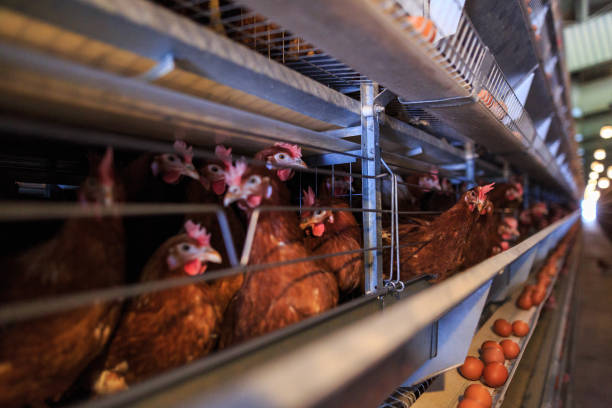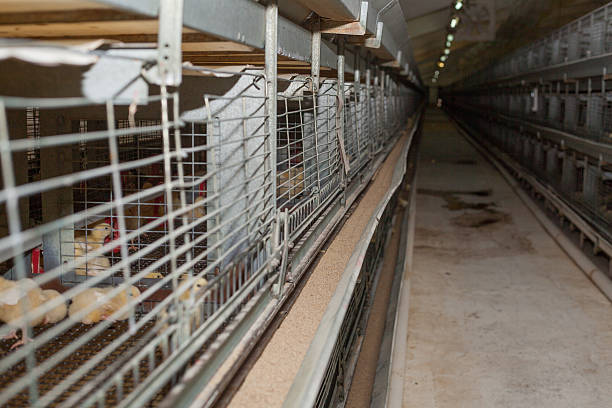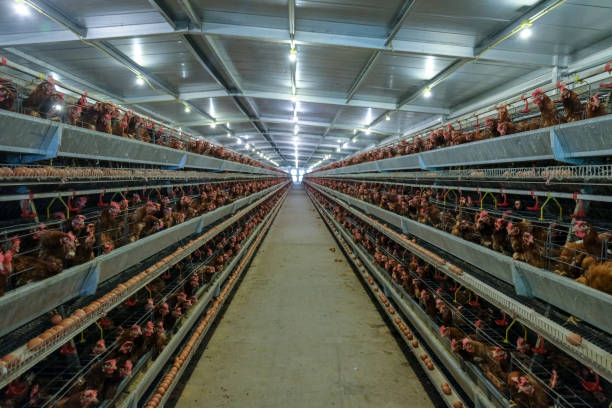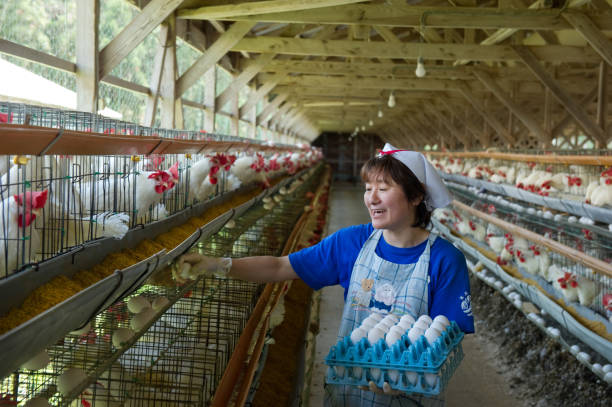
Investing in 20,000 Layer Chicken Cage System: Prices & Benefits
Investing in 20,000 Layer Chicken Cage System: Prices & Benefits
The allure of a steady income stream and participation in the burgeoning agricultural sector has made layer chicken farming an increasingly attractive option for entrepreneurs, particularly in regions with rapidly growing populations and a high demand for eggs. Scaling up operations to a respectable size, such as a 20,000-layer hen farm, requires careful planning and a significant initial investment. One of the most crucial decisions involves the selection of the housing system, and cage systems are becoming increasingly popular for their efficiency and management benefits. This article delves into the various aspects of investing in a 20,000-layer chicken cage system, exploring the price points involved, the diverse benefits offered, and critical factors to consider before making the plunge.
Understanding Layer Chicken Cage Systems
Before diving into the specifics of a 20,000-layer operation, it’s essential to grasp the fundamentals of layer chicken cage systems. Essentially, these systems involve housing hens in tiered cages, often constructed from galvanized steel wire mesh. These cages are designed to provide each bird with adequate space while optimizing the use of available floor area. They facilitate efficient egg collection, waste management, and overall flock management. There are generally two primary types of cage systems to consider:
* **A-Frame Cages:** These are the more traditional and often more economical option. The cages are arranged in an A-shape, allowing for relatively simple construction and management. Typically, they require more manual labor for tasks like egg collection and waste removal.
* **H-Frame Cages (or Battery Cages):** These are the more modern and automated option, generally arranged in stacked rows. They often incorporate automated feeding, drinking, egg collection, and manure removal systems, significantly reducing labor requirements and improving efficiency. While the initial investment is higher, the long-term operational cost savings can be substantial.
The Cost Breakdown: Investing in 20,000 Layers
Estimating the cost of a 20,000-layer chicken cage system requires a detailed assessment of several factors. The price will fluctuate depending on the country of origin, the level of automation, the quality of materials, and the specific features included. However, let’s break down the major cost components:
* **Cage System:** This is the most significant expense. A complete cage system for 20,000 layers can range dramatically. A basic A-frame system with manual egg collection and manure removal might cost $40,000 to $80,000. An H-frame system with full automation can easily reach $100,000 to $250,000 or more. These are broad estimates, and obtaining quotes from multiple suppliers is crucial for accurate pricing.
* **Poultry House Construction:** The cost of constructing a suitable poultry house to accommodate the cage system is another significant factor. This includes the foundation, walls, roofing, ventilation system, and insulation. The price will depend on the materials used (e.g., concrete, steel, wood), the size of the building, and local labor costs. A rough estimate for a poultry house capable of housing 20,000 layers could range from $30,000 to $100,000 or even higher depending on specifications.
* **Ventilation System:** Adequate ventilation is essential for maintaining optimal air quality, temperature, and humidity levels within the poultry house. This typically involves installing fans, air inlets, and potentially cooling pads or heating systems, depending on the climate. The cost of a reliable ventilation system can range from $5,000 to $20,000.

* **Feeding System:** This includes the feeders, feed storage bins, and potentially automated feeding mechanisms. For a 20,000-layer operation, investing in an automated feeding system can significantly reduce labor costs and ensure consistent feed distribution. The cost can range from $3,000 to $15,000.
* **Drinking System:** Providing a constant supply of clean drinking water is crucial for hen health and egg production. Nipple drinker systems are commonly used in cage systems. The cost of a drinking system can range from $1,000 to $5,000.
* **Egg Collection System:** This may be manual or automated, depending on the type of cage system chosen. Automated egg collection systems significantly reduce labor costs and minimize egg breakage. The cost can range from $2,000 to $20,000 or more for a fully automated system.
* **Manure Removal System:** Efficient manure removal is essential for maintaining hygiene and preventing disease outbreaks. Manual manure removal involves shoveling and hauling, while automated systems use scrapers or belts to remove manure. The cost can range from $1,000 to $15,000 or more for an automated system.
* **Lighting System:** Proper lighting is critical for stimulating egg production. LED lighting is becoming increasingly popular due to its energy efficiency and long lifespan. The cost of a lighting system can range from $500 to $2,000.
* **Biosecurity Measures:** Implementing strict biosecurity measures is essential for preventing disease outbreaks. This includes perimeter fencing, foot baths, disinfection equipment, and rodent control measures. The cost can range from $1,000 to $5,000.
* **Initial Stock of Chicks:** The cost of purchasing 20,000 day-old chicks or pullets (young hens ready to lay eggs) is a substantial expense. The price per chick or pullet varies depending on the breed and the supplier. Expect to pay anywhere from $1 to $5 per bird, translating to $20,000 to $100,000 for the entire flock.
* **Feed Costs (Initial Period):** It’s crucial to factor in the cost of feed for the initial growing period before the hens start laying eggs. The cost will depend on the type of feed and the duration of the growing period.
* **Contingency Fund:** It’s always wise to set aside a contingency fund to cover unexpected expenses such as equipment repairs, disease outbreaks, or fluctuations in feed prices. A contingency of 5-10% of the total investment is recommended.
Therefore, the total investment for a 20,000-layer chicken cage system can realistically range from $123,500 to $502,000 or more ($40,000 to $80,000 for cage system + $30,000 to $100,000 for poultry house consutrction + $5,000 to $20,000 for ventilation system + $3,000 to $15,000 for feeding system + $1,000 to $5,000 for drinking system + $2,000 to $20,000 for egg collection system + $1,000 to $15,000 for manure removal system + $500 to $2,000 for lighting system + $1,000 to $5,000 for Biosecurity measures + $20,000 to $100,000 for initial stock for chicks + contingency fund), depending on the level of automation and the specific features included.
The Benefits of Investing in a Cage System
While the initial investment is significant, a well-designed and managed cage system offers numerous benefits compared to free-range or deep litter systems:
* **Increased Egg Production:** Cage systems allow for better control over the environment, including temperature, lighting, and ventilation, which can optimize egg production. Hens in cages typically lay more eggs than those in free-range systems.

* **Improved Feed Conversion Ratio:** Cage systems minimize feed wastage and allow for more precise feed rationing, resulting in a better feed conversion ratio (the amount of feed required to produce one egg).
* **Reduced Disease Risk:** Cages separate hens from their manure, reducing the risk of diseases and parasitic infections. This leads to healthier birds and lower veterinary costs.
* **Easier Management and Monitoring:** Cages make it easier to monitor individual hens for health problems and to identify and remove unproductive birds.
* **Efficient Egg Collection:** Automated egg collection systems significantly reduce labor costs and minimize egg breakage.
* **Better Space Utilization:** Cage systems allow for higher stocking densities, maximizing the use of available floor space.
* **Improved Manure Management:** Cage systems facilitate efficient manure collection and removal, making it easier to manage manure and reduce odor.
* **Enhanced Biosecurity:** Cage systems make it easier to implement biosecurity measures and prevent the spread of diseases.
Factors to Consider Before Investing
Before investing in a 20,000-layer chicken cage system, it’s essential to carefully consider the following factors:
* **Market Demand:** Conduct thorough market research to ensure there is sufficient demand for eggs in your area.

* **Financing Options:** Explore different financing options, such as loans, grants, or partnerships.
* **Supplier Selection:** Choose a reputable supplier that offers high-quality cage systems and provides excellent customer support.
* **Technical Expertise:** Ensure you have access to the technical expertise required to install, operate, and maintain the cage system.
* **Regulatory Requirements:** Comply with all local and national regulations related to poultry farming.
* **Environmental Considerations:** Implement environmentally friendly practices to minimize the impact of your farm on the environment.
* **Labor Availability:** Assess the availability of skilled labor to manage the farm.
* **Feed Supply:** Secure a reliable supply of high-quality feed at a competitive price.
* **Disease Prevention:** Develop a comprehensive disease prevention program.
* **Egg Handling and Marketing:** Establish efficient egg handling and marketing channels.
Conclusion
Investing in a 20,000-layer chicken cage system is a significant undertaking, but it can be a highly profitable venture with careful planning and execution. While the initial investment can be substantial, the benefits of increased egg production, improved feed conversion ratio, reduced disease risk, and efficient management make cage systems a compelling option for serious poultry farmers. By carefully considering the factors outlined in this article, entrepreneurs can make informed decisions and maximize their chances of success in the layer chicken farming industry. Remember to obtain detailed quotes from multiple suppliers, develop a comprehensive business plan, and seek expert advice before making the plunge. A well-managed 20,000-layer chicken farm can provide a sustainable income stream and contribute to the growing demand for eggs in local and regional markets.
